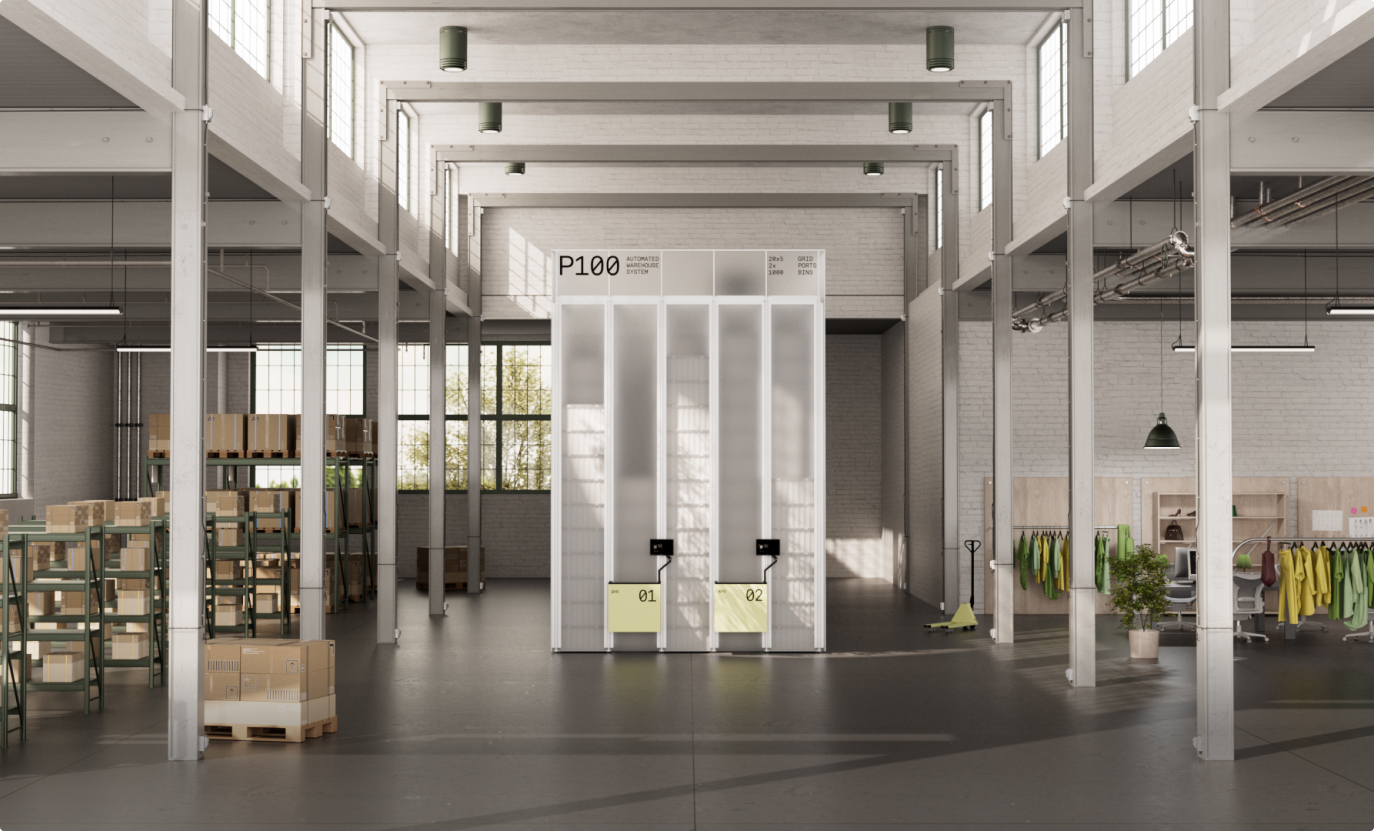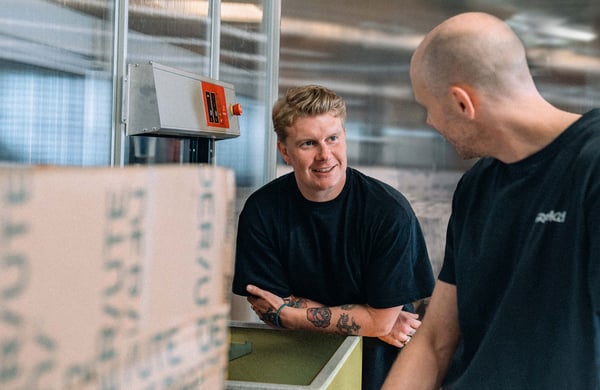Looking Back
1. Henry Ford and the Assembly Line, 1910s
What does the Model T have to do with warehouse automation? Technically, Henry Ford’s assembly line was powered by manual labor. However, he leveraged mechanical movements to vastly increase speed and efficiency of production. It was a key instance of working smarter, not harder. By challenging the set way of doing things, Ford was able to completely revolutionize the way we manufacture goods.
In enabling mass production, Ford significantly reduced the resources required to produce an automobile, which lowered costs. The effects rippled outward to allow more people access to cars, create jobs, and boost the economy. With one look at our world today, it’s clear how his innovation has made an indelible mark on the way we live.

2. Pallets and Unit Loads, 1910s-1950s
The modern pallet first emerged around 1917, with the invention of the lift truck that eventually became the forklift. Across the years, the design was improved to create a sturdy surface for transporting goods, along with a so-called “skid platform” that involved wooden planks attached to stringers. The pallet continued to evolve for greater stability and stackability, and the design was eventually standardized to simplify logistics.
Demand for pallets soared during World War II along with the need to transport large amounts of supplies overseas. This is when “unit loads” (palletized goods) really took over to facilitate shipping and handling. By the 1950s, the pallet had become something very close to what we still use today.
One could argue that the pallet sparked the first introduction of automated storage and retrieval systems (ASRS) in the 1960s. However, these early versions of ASRS technology were poorly designed—bulky and inefficient, the systems were limited to loading very large items onto massive pallets.
3. Dr. Grey Walter’s autonomous tortoise robots, 1950s
The AMRs (autonomous mobile robots) that you see today bear resemblance to the first electronic mobile robots invented by neuroscientist W. Grey Walter. As an experiment in machine intelligence, Walter built simple, battery-powered robots that he dubbed Elmer and Elsie. Their slow movements and domed appearance earned them the nickname “tortoises,” and they had the ability to both explore and react based on visual and tactile feedback from their environment.
Though Walter’s inventions took place in another century, his ideas continue to be reflected in present-day warehouse technology.
4. AMRs, 1960s-present
Walter’s work established the foundation that would be built upon for the next 60 years and counting. By the 1990s, the first commercially viable AMR was born. Called the HelpMate, the primary function of these robots was to move items around hospitals. It was a huge step in replacing menial, tedious tasks with an automated solution, while decreasing labor requirements.
Over the next 30 years, AMR technology continued to improve, giving rise to the more sophisticated machines used in warehouses and factories today. Though their functionality has come a long way, the basic premise remains the same: AMRs rely on environmental cues to navigate at relatively slower speeds.
5. ASRS: Shuttles, 1990s-present
Around the 1990s to the early 2000s, advanced shuttle systems began to emerge in warehouses, giving a massive boost to speed of operations. Used mostly in conjunction with the game-changing pallet, shuttle systems involve mobile robots that travel across lengthy aisles to transport goods to vertical lifts.
Known for their speed, shuttle systems gained traction in warehouses with a large throughput, and smaller SKU count. Innovations continue to improve reliability and safety for businesses to unlock speed in processes such as order fulfillment.
6. ASRS: Cube-based, 1996-present
In the 1990s, a small town on the West Coast of Norway gave rise to a seismic shift in warehouse automation (we admit we are biased).
Like many great inventions, cube-based ASRS was born out of necessity. The Hatteland Group, a large distributor of electronic components, had been running out of space in their warehouses. But rather than submit to an endless cycle of outgrowth and expansion, Technical Director Ingvar Hognaland chose to think outside the box, and into the cube. He realized that traditional warehouses are a massive waste of space—instead of storing things in sprawling aisles, why not store them stacked densely within a grid? And instead of having to hunt down goods, why not leverage technology to have them brought to us?
With this eureka moment, the world’s first cube-based ASRS was created. Since then, research and development has unleashed the potential of Hognaland’s invention, and continues to transform warehousing as we know it. In fact, we’ve taken the same technology and tailored it to revolutionize smaller businesses and independent brands.

Looking Ahead
As our world moves at an ever faster pace, warehouses are adapting to keep up. We’re on the cusp of an automation-driven revolution—market reports predict that by 2027, the global ASRS market will reach 11.8 billion, compared to 8.3 billion in 2022.
It’s a big possibility that within the next decade, robots will become a regular part of not only the warehouse, but our world at large. After looking back on how this technology has evolved over the past century, we’re excited to see what comes next.



-1.jpg?width=1920&name=pio_foto%20(49%20of%2082)-1.jpg)


.jpg?width=600&name=Beauty-Welness-Pio-04743%20(1).jpg)